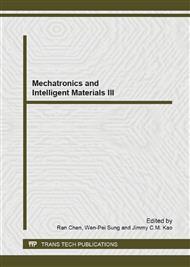p.560
p.565
p.571
p.575
p.579
p.585
p.589
p.593
p.597
Application of Phast in the Quantitative Evaluation for the Liquefied Ammonia Leakage Accidents
Abstract:
In order to establish comprehensive safety management system, in-depth study about the liquefied ammonia leakage accidents and its impacts are fairly needed. The assessment model of “Leak” scenario of liquefied ammonia is established by Phast software to realize the quantitative assessment for the toxic effects of liquefied ammonia leakage accident, in which parameters setting are preliminarily studied as well. The dispersion distances and influence zones of ammonia leakage accident are analyzed, and the toxicity ranges of ammonia are classified together. Technical guidance and theoretical basis for the emergency rescue can be provided according to the simulation results, suggestion on personnel evacuation are subsequently put forward; those are helpful to minimize the loss and hazard caused by liquefied ammonia leakage accidents.
Info:
Periodical:
Pages:
579-582
Citation:
Online since:
June 2013
Authors:
Keywords:
Price:
Сopyright:
© 2013 Trans Tech Publications Ltd. All Rights Reserved
Share:
Citation:


